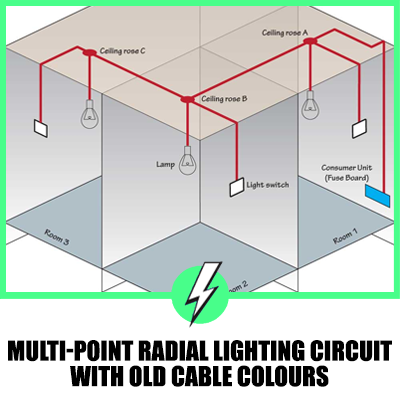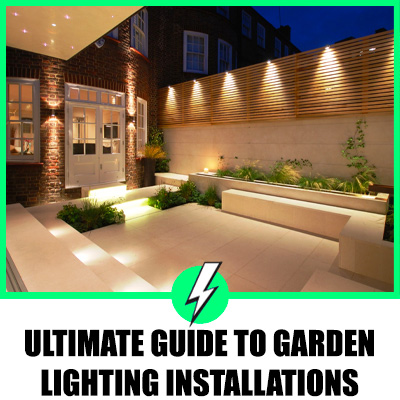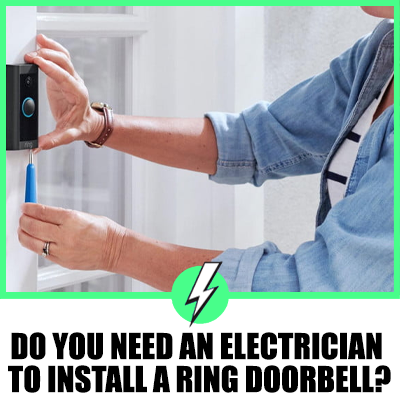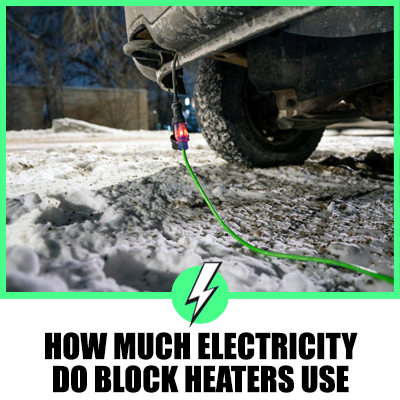Does An Outdoor Electrical Wire Need To Be In A Conduit?
Below we answer a question many people have when adding power to outdoor appliances, like a shed, lights, etc. We also cover:
- Can you run a cable to the garden shed without using conduit?
- What protection do you need for external cables?
- How many cables can you run in conduit?
The cables should either be contained in steel conduit or protected by a 30mA RCD. Cables should be installed at least 50mm (2″) from the surface if these two conditions cannot be met.
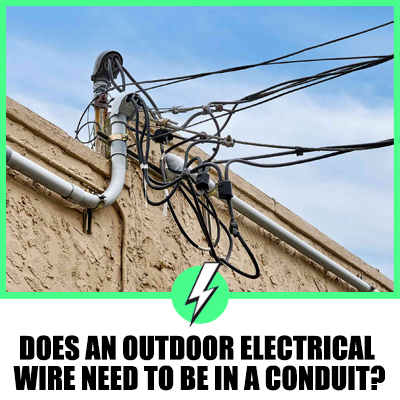
You can use armour cable to run electrics outside of your home, armour cable has a resilient sheath that is UV resistant, and it can be buried without any problems. There is a formula for the number of cables in conduits. Two wires: maximum fill is 31% Three wires or more: maximum fill is 40% of the conduit’s total available space.
Contents
How do I run electric cables outside in the UK?
It depends on where you need to power to be in your garden. A common way is to wire an external socket from a spur using a switched connecting unit mounting to an outlet socket on the wall.
If you need to run a cable, say to alight by clipping a cable to the wall, you will need to select a UV-resistant and water-resistant cable. PVC could be considered a good choice.
PVC cable is UV resistant and helps the cable maintain its mechanical properties, whereas other cables can become brittle and crack after an extended time under sunlight.
If you want to extend further than your outside wall, say to a garden shed or garden office, you can either use conduit or armoured cable, which could be clipped to a fence rail or buried out of sight.
Your circuit will need a 30mA RCD for protection.
Can you use 2.5 twin and earth outside?
Yes, twin and earth cables have been used outside for decades without problems. They can be clipped to walls and fencing but will be placed in a suitable conduit when buried.
Conduits such as XLPE are ideal for running twin and earth underground.
How deep can you bury armour cables?
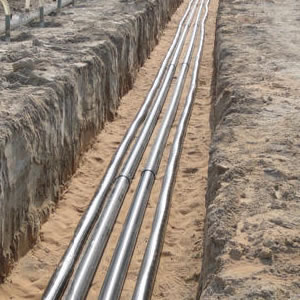
The regulations state not less than 18 inches deep or 600mm, and it should be at a depth that is unlikely to be disturbed by future excavations.
The distribution network operator(DNO) brings electricity into your home. There is a labyrinth of electrical supply cables under the streets and cities of the UK that bring electricity to your home.
The distribution network operator normally lays the power cables in a trench around the depth of a home footing which is about 3 feet or 1m.
Can you run Armoured cable along a fence in the UK?
Yes, you can. It will not look appealing unless you can train some shrubs to grow around the cable for camouflage.
There are no set height requirements, and nothing stops you from running armour cable at the back of your flower beds, so it’s less intrusive.
It’s really tough, and even an energetic high from a garden spade would not damage the cable sufficiently to cause a problem.
Can you run armoured cable under decking?
This is a little more difficult to answer. The question is difficult because you are required to bury cables under decking in a conduit?
If you bury the armoured cable, it complies with part P. If you attach the rigid part to the wall securely, that would be sufficient tinder part P.
If you are installing a hot tub on the decking, you need to make sure the decking centres are no more than 400 mm. This will stop anything from flexing and supply a good base for the hot tub.
You will need to decide where the power inlet is going to be. It does not seem feasible to close to a wall, so it seems logical to trench the area after you have marked the position of the hot tub and lay the cable in this manner to comply with the regs fully.
When should you involve your electrician with your hot tub installation?
At the planning stage. Installing a hot tub outside is great fun and will give you years of pleasure. However, your new hot tub needs to be wired incorrectly to the standards of part P under the building regulations.
An armoured cable will be fitted to your existing consumer unit if you have an open way. If not, the electrician will need to install a separate switch unit for the RCDBO.
This could be in your garage, in your kitchen or even close to your front door, so much consideration needs to be thought through.
How do I supply electricity to my garden shed in the UK?
You will need to work alongside a qualified accredited, competent electrician before doing anything.
Outside electrics that are an electricity supply from your property to an outside fitting come under part P’s strict rules of the building regulations.
To reduce the bill from the electrician, you can start by digging the trench for the cable to lay in, in a garden. This can be 0.5m or deeper. The deeper, the better.
Plan your cable run and keep it linear, with no tight bends or joints anywhere.
Plan where you need your power outlets and how many you need.
Can I run an extension cord to my shed?
Yes, but it’s a temporary solution, like don’t leave it connected overnight or when you are not working in your shed.
If you want a permanent power supply, you will need to make plans with an electrician on the best way to achieve your goals.
What are the current electrical regulations in the UK?
BS7671, It’s the 18th edition big brown book that guides electricians. It received an amendment in 2022, which came into force on September 1 2022.
The amendments simplify a few areas and introduce new specifications that may affect what you do when using cables outside in the open. You need to check before proceeding.
Do you need an electrician for outside wiring?
Once you move away from light on an external wall, you will need an electrician to comply with part P of the building regulations.
